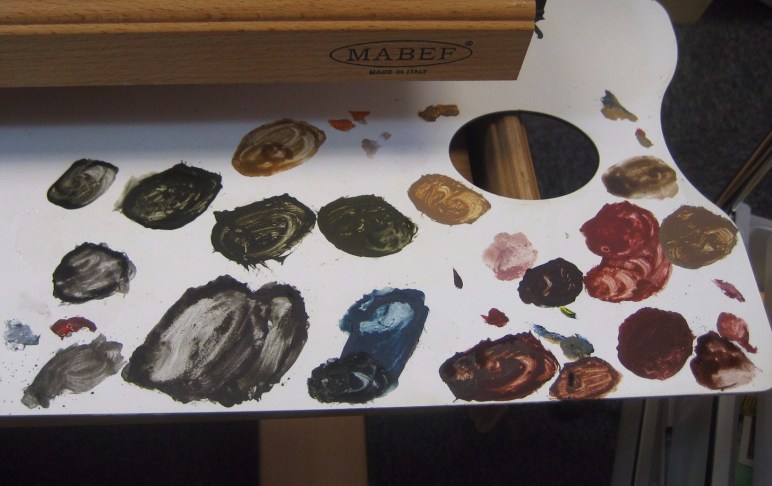One of those botched restorations, the Spanish St George sculpture, was reported as having been ‘unrestored’ recently, meaning that the overpaint that had been so liberally daubed over the original had been removed and the whole thing had been more sympathetically and expertly treated. It’s a bit of a clumsy term, but I know what they are trying to say. It reminded me of a couple of paintings I’ve had through my studio, which had been ‘restored’ to within an inch of their lives. Whoever had had them last had almost completely repainted parts of them, which I suppose is where people get the idea that that’s what I do (I don’t). It can be a bit tricky when something has had too much done, because I can’t be certain of what will be left underneath. Often they are heavily damaged, but there is almost always more original material under the over-zealous restorer’s work than the extensive treatment would suggest.
This portrait on panel had a long split running through the centre. The edges of the split were uneven, so the previous restorer had filled over original material to smooth the surface. However, once they’d done that they’d covered the original nose up with filler and had to make one up. The one they painted was facing the wrong way, with both nostrils visible where there should only be one. When I removed the overpaint and excess fill, I found that the original nose was almost completely intact, there was little evidence to support such a strong shadow on the forehead or the eyelid. Although the surface, with the big step between the one side of the crack and the other, is still visually problematic, my minimal filling and retouching mean that much more of the original artist’s work can be seen and, I hope, enjoyed.
Another unrestoring job, from very early in my career, was this portrait of a male sitter. This chap had been smoothed out all over: given a new hair do, a bigger chin and a new sleeve that didn’t quite make sense. My client wanted to see what was really there, so I undertook to remove all of the previous restorations. I found that the painting had been severely over-cleaned before it was overpainted (not necessarily by the same person). It is quite daunting to take something that looks whole (for all that it is obviously not original) and make it look ‘worse’. However, the surviving paint was so much more delicate and translucent than the restorer’s opaque work that removing it gave the painting back its quality. The retouching was quite difficult, with such extensive areas of loss to tackle with my tiny brush, but by ‘knocking back’ the bare wood with colour, I was able to bridge the gaps and discover what remained. Importantly, I didn’t try to invent what I thought should have been there or attempt to make it look ‘as good as new’.
Having pointed out what a excessive, incoherent and unsympathetic work these other restorers have done, I should say that the restorations were easily reversible without damage to the original. This is where my two ‘unrestorations’ depart from the headline grabbers, which have been further damaged as well as disfigured by inexpert hands. I’ve said it before and I’ll say it again, please don’t try this at home!






